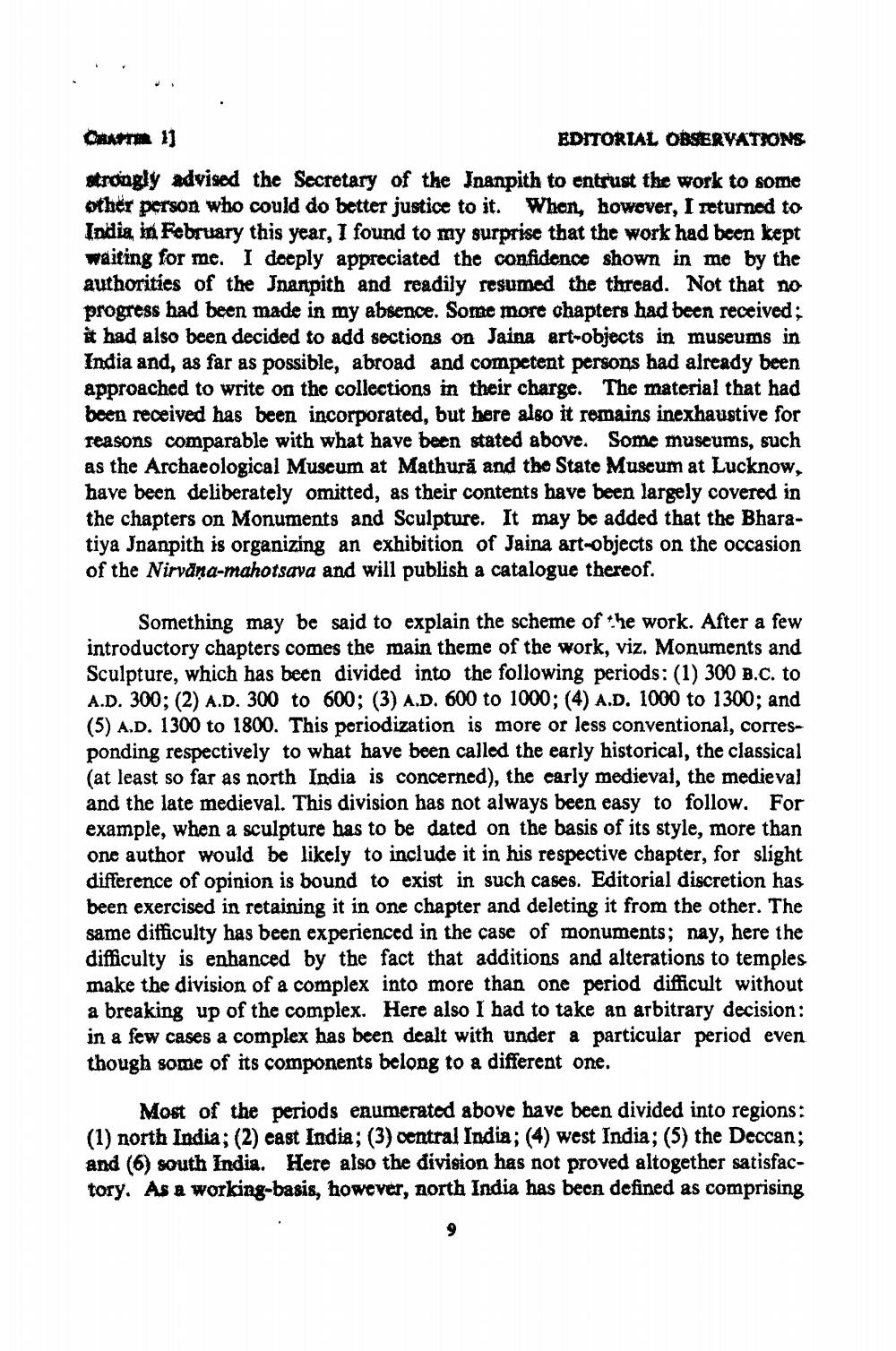________________
CHAPTER 11
EDITORIAL OBSERVATIONS
strongly advised the Secretary of the Inanpith to entrust the work to some other person who could do better justice to it. When, however, I returned to India, in February this year, I found to my surprise that the work had been kept waiting for me. I deeply appreciated the confidence shown in me by the authorities of the Jnanpith and readily resumed the thread. Not that no progress had been made in my absence. Some more chapters had been received; it had also been decided to add sections on Jaina art-objects in museums in India and, as far as possible, abroad and competent persons had already been approached to write on the collections in their charge. The material that had been received has been incorporated, but here also it remains inexhaustive for reasons comparable with what have been stated above. Some museums, such as the Archaeological Museum at Mathura and the State Museum at Lucknow, have been deliberately omitted, as their contents have been largely covered in the chapters on Monuments and Sculpture. It may be added that the Bharatiya Jnanpith is organizing an exhibition of Jaina art-objects on the occasion of the Nirvana-mahotsava and will publish a catalogue thereof.
Something may be said to explain the scheme of the work. After a few introductory chapters comes the main theme of the work, viz. Monuments and Sculpture, which has been divided into the following periods: (1) 300 B.C. to A.D. 300; (2) A.D. 300 to 600; (3) A.D. 600 to 1000; (4) A.D. 1000 to 1300; and (5) A.D. 1300 to 1800. This periodization is more or less conventional, corresponding respectively to what have been called the early historical, the classical (at least so far as north India is concerned), the early medieval, the medieval and the late medieval. This division has not always been easy to follow. For example, when a sculpture has to be dated on the basis of its style, more than one author would be likely to include it in his respective chapter, for slight difference of opinion is bound to exist in such cases. Editorial discretion has been exercised in retaining it in one chapter and deleting it from the other. The same difficulty has been experienced in the case of monuments; nay, here the difficulty is enhanced by the fact that additions and alterations to temples make the division of a complex into more than one period difficult without a breaking up of the complex. Here also I had to take an arbitrary decision: in a few cases a complex has been dealt with under a particular period even though some of its components belong to a different one.
Most of the periods enumerated above have been divided into regions: (1) north India; (2) east India; (3) central India; (4) west India; (5) the Deccan; and (6) south India. Here also the division has not proved altogether satisfactory. As a working-basis, however, north India has been defined as comprising
9




